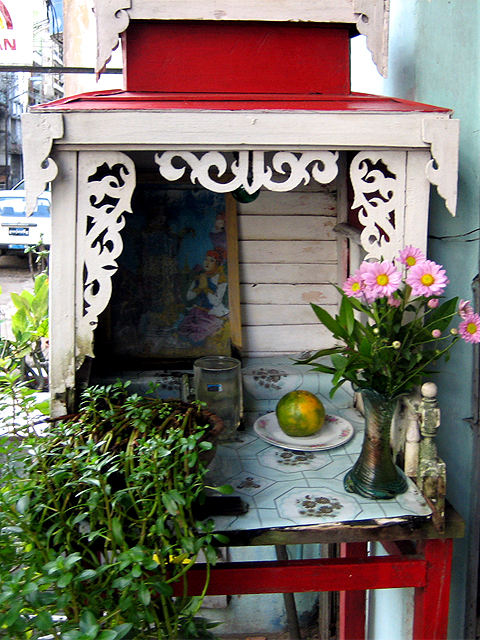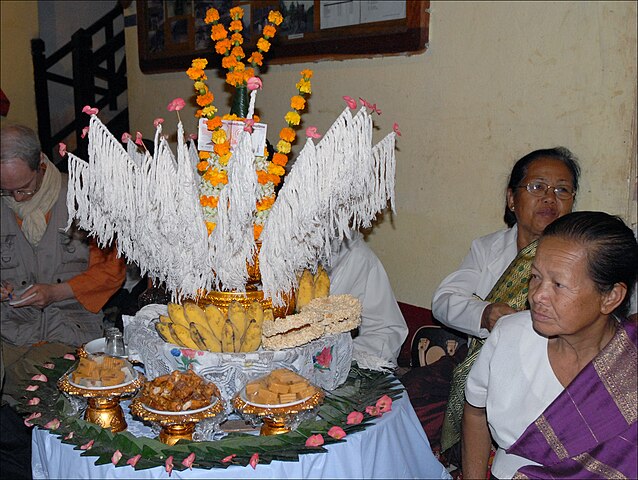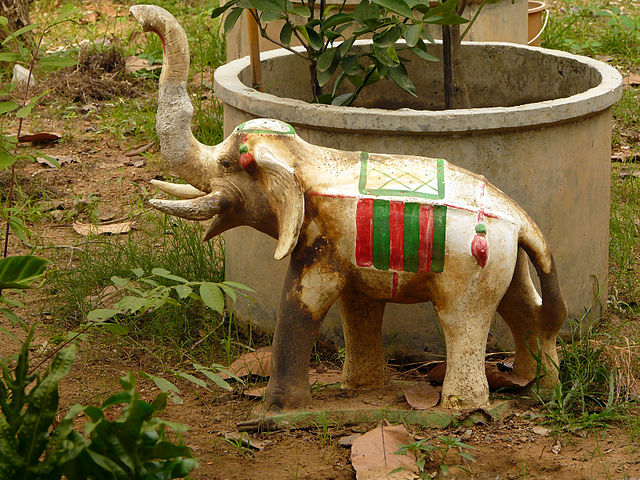
On 8 and 9 August 2019, the Southeast Asian Ministers of Education Organization (SEAMEO) Regional Centre for Archaeology and Fine Arts (SPAFA) will present an international conference on Animism in the Arts of Southeast Asia at the Thammasat University Tha Prachan campus.
The SEAMEO Regional Centre for Archaeology and Fine Arts (SEAMEO SPAFA) is part of SEAMEO, an international organization dedicated to promoting cooperation in education, science and culture in Southeast Asia. Member countries include, in alphabetical order, Brunei Darussalam, Cambodia, Indonesia, Lao PDR, Malaysia, Myanmar, Philippines, Singapore, Thailand, Timor-Leste, and Vietnam. Associate member countries include Australia, Canada, Germany, France, New Zealand, Netherlands, Spain, and the United Kingdom. According to its website, the goals of SEAMEO SPAFA are to
- Cultivate awareness and appreciation of cultural heritage through collaboration in information dissemination and other relevant programmes of activities.
- Promote and help enrich archaeological and cultural activities in the region through collaborative programmes and other relevant activities.
- Further professional competence in the fields of archaeology and fine arts through regional programmes and activities, and through sharing of resources and experiences.
- Advance mutual knowledge and understanding among the countries of Southeast Asia through regional programmes in archaeology and fine arts.
The Thammasat University Library owns several books published by SPAFA. The director of SEAMEO SPAFA is M.R. Rujaya Abhakorn, Ph.D. The organization’s role is to aim at being the world’s reference and authoritative knowledge centre on Southeast Asian archaeology and fine arts through:
- Capacity-building workshops, training and seminars, making alliances and networking with academics, resource persons, and institutions specialized in these fields.
- Promotion and regular support of archaeological and cultural activities in the region, with the focus on regional relevance in meeting the changes and needs due to the social and economic integration in Southeast Asia.
- Expansion of the Centre’s Library and electronic resources relating to archaeology and fine arts.

Leading programs include
- Advancing Southeast Asian Archaeology: To support consultative meetings, training, workshops, networking, experts’ meetings, researches and project evaluation in specific fields of Southeast Asian archaeology.
- Sacred Universe: To support consultative meetings, training, workshops, networking, experts’ meetings, researches and project evaluation in specific topics and themes in fine arts, photographic arts, religious arts, performing arts and oral traditions of Southeast Asia.
- Conservation in the Tropics: To support consultative meetings, training, workshops, networking, experts’ meetings, researches and project evaluation in the conservation of tangible Southeast Asian Heritage with the emphasis on the relevancy and applicability of traditional conservation methods and the role of local communities.
In addition, collaborative projects are inspired by the themes of sustainable development and education.
The conference Animism in the Arts of Southeast Asia is an opportunity for students to learn about Animism, the religious belief that objects, places, and animals all have a specific spiritual character. The word animism derives from a Latin term meaning spirit. The TU Library collection includes several books about different aspects of animism around the world.
A number of highly interesting speakers will be featured at the conference, including Dr. Maslin Haji Jukim of Universiti Brunei Darussalam who will speak on Monkey and Chicken: Motif in Brunei Folklore. Mr. Sokrithy IM, Director of the Angkor Training Center will lecture on Ta Reach, the Grand Vishnu at Angkor Vat: from Brahmanism to Animism. Dr. Pindi Setiawan, Head of the Art and Design Library at the Faculty of Art and Design of the Bandung Institute of Technology, Indonesia, will share thoughts on Dayak Basap Ornaments: Engaging the Supernatural.

Dr. Boonsri Phuthavong, Head of the Division of Beliefs and Religions at the Lao Academy of Social Sciences will share ideas about The Baci Ritual: A Centrepiece of Lao Traditions. TU students in the Faculties of Religious Studies, History, Sociology, and related subjects may be interested to note that according to Dr. Boonsri’s abstract:
The Baci Ceremony is a specific ceremony in Lao, which has been practised for hundreds of years and has its origins in the ancient customs of past generations. Lao people believe that a human being is a union of 32 organs, each having a spirit or Khuan (Lao word for spirit) to protect them. The Baci or Sou khuan is a well-known traditional ritual and an important part of Lao culture. It has a profound significance for Lao people, and is popular with visitors to the country. It represents a mixture of Animism, Brahmanism, Buddhism and spirit worship. The tradition follows the belief that a human being’s main body parts are inhabited by 32, or even more, spirits. In some circumstances, these spirits may leave the body to wander around and may lose their way in the universe, thus causing a person to become weak and vulnerable to dangers. It is therefore important to call the missing spirits back; this ceremony is performed on important occasions such as births, weddings, farewells, visits, Lao New Year, etc.
Dr. Welyne Jeffrey Jehom of the University of Malaya will speak of textiles, on the theme of Iban pua kumbu as a Canvas of Documentation and symbol of Identity.
Professor Mya Mya Khin, Ph.D., Head of the Department of Anthropology at the University of Yangon, Myanmar, will lecture on The Wedding Ceremony of U Min Kyaw: Interaction between Supernatural.
Dr. Ana P. Labrador, Assistant Director of the National Museum of the Philippines, will speak about Babaylan, shamans of different ethnic groups of the pre-colonial Philippine islands: Performing Babaylan in Philippine Communities: liminality, myth and inspiration.
Dr. Margaret Chan, Theatre & Performance Studies, School of Social Sciences, Singapore Management University, will make a presentation on Animism in Art: The Spirit in Puppets.
Dr. Anucha Thirakanont of Thammasat University and Dr. Pensupa Sukkata of Chiang Mai University and Thammasat University will discuss the Cremation of Luang Pho Khun,
a funeral tradition for especially eminent monks in which the coffin is built in the shape of a palace on a Husadilingu, a powerful mythical bird in ancient Hinduism that is a mix between a swan, elephant, and lion.
Professor Dinh Hong Hai of the Department of Anthropology of Vietnam National University, will contribute reflections on Animism in Vietnamese Folk Art, noting that
The long historical belief in Animism and ancestor worship together with Hinduism, Taoism and Buddhism in Vietnam has had a tremendous influence on the country’s folk art. It has become a kind of syncretic art because the Vietnamese do not make the distinction between the secular and sacred as clearly or precisely as most Westerners do in viewing the common strands of religion in Vietnam. Traces of Animism in Vietnamese folk art is mostly found in decorative objects located in major religious places. The belief in good and evil spirits created many forms of good and evil deities because these beliefs hold that all phenomena and forces in the universe are controlled by spirits. Before the 20th Century, the Vietnamese did not perceive Animism as defined by Edward Burnett Taylor; they used the term “vật linh” (sacred animals) or “vật thiêng” (mascots) to describe it. Animism in the Vietnamese context manifests in animals, objects, weapons, ritual implements, sacrifice, tree stumps, rocks, or the things and phenomena of nature, such as rain, wind, thunder and lightning (Dinh Hong Hai, 2018). This paper examines the historical contexts and the influence of Animism in Vietnamese folk art. It also shows how Vietnamese folk art has been shaped by Animism and how the arts changed during a period of economic development and modernization, known as “doi-moi”, in Vietnam after 1986.

(All images courtesy of Wikimedia Commons)
